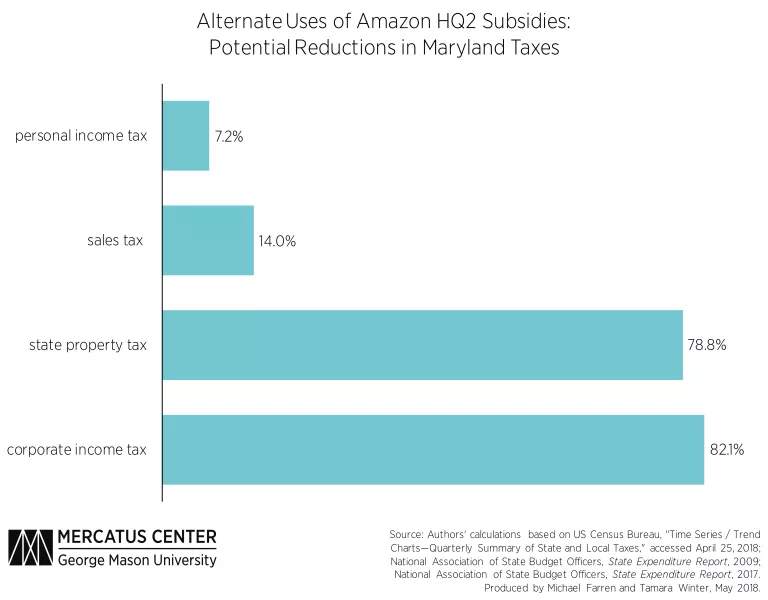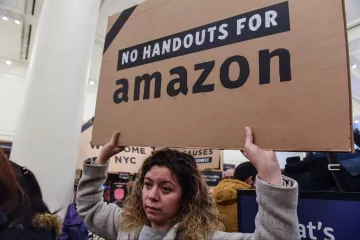- | Corporate Welfare Corporate Welfare
- | Data Visualizations Data Visualizations
- |
The Hidden Costs of Maryland’s Amazon Bid
Amazon’s 2017 announcement of plans to build its new “HQ2” headquarters ignited a race by cities and states to offer the tech company lucrative incentive packages to sway its location decision. Maryland’s $8.5 billion subsidy package is, for now, the largest among the 20 semifinalists. The bid included $5.6 billion in state tax credits, $2 billion in infrastructure spending, and $925 million in mandated local property tax credits. But although proponents of targeted economic development incentives argue that such subsidies are essential to attract businesses, they are in fact wasteful and unnecessary.
It is unlikely that Maryland’s subsidies—or those offered by the other remaining contenders—will change Amazon’s final decision. If building HQ2 in the optimum location allows Amazon to grow its revenue just 1 percent faster than the second-best location, the increased earnings would aggregate to more than $1 trillion more revenue and $20 billion additional profits over 20 years. Short of an improbable tie between locations, even the largest local subsidies will be eclipsed by the better earnings available at the location which best meets Amazon’s needs. This means that the subsidies intended to attract Amazon are unnecessary.
Furthermore, every subsidy offered to a particular firm or industry comes with public spending tradeoffs. In Maryland’s case, rather than give Amazon $7.6 billion in state-funded subsidies, the Maryland legislature could instead
- pay the state’s highway maintenance costs for 26 years,
- fund Baltimore’s canceled $2.9 billion Red Line public transit project, or
- offer 186,000 four-year, full-tuition scholarships to the University of Maryland.
Alternately, rather than using the subsidies for increasing public services, Maryland could lower the tax burden for existing businesses and residents. The decreased cost of doing business/increased after-tax earnings could then lead to greater economic growth that is more broadly distributed across the state. The following chart highlights the opportunity cost of tax relief in Maryland’s Amazon bid.

Instead of offering Amazon $7.6 billion in state-funded subsidies, lawmakers could lower individual income taxes by 7.2 percent. The median household in Maryland earned $79,000 in 2016, meaning that this reduction would be worth around $225 to that household. Alternately, lawmakers could reduce the state sales tax rate by nearly 14 percent, which would do more to help lower-income people. A family that spends $30,000 each year on taxable goods and services would see its expenses drop by $250.
More dramatically, Maryland’s lawmakers could drop the state property tax rate by almost 79 percent or cut the state corporate income tax rate by 82 percent. Put another way, rather than singling out Amazon for special treatment, Maryland lawmakers could nearly eliminate the state’s corporate income tax. In doing so they would create a much more fertile environment for all businesses to grow and create jobs.
Adding insult to injury, a growing body of empirical evidence suggests that targeted economic incentives don’t lead to broad economic prosperity. Instead, they simply let politicians pander to special interest groups. In short, even if Maryland succeeds in its bid to host HQ2, the “win” will have to be considered against the loss to residents and other businesses.


